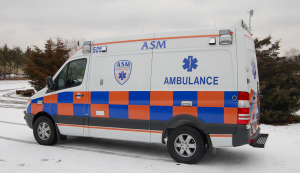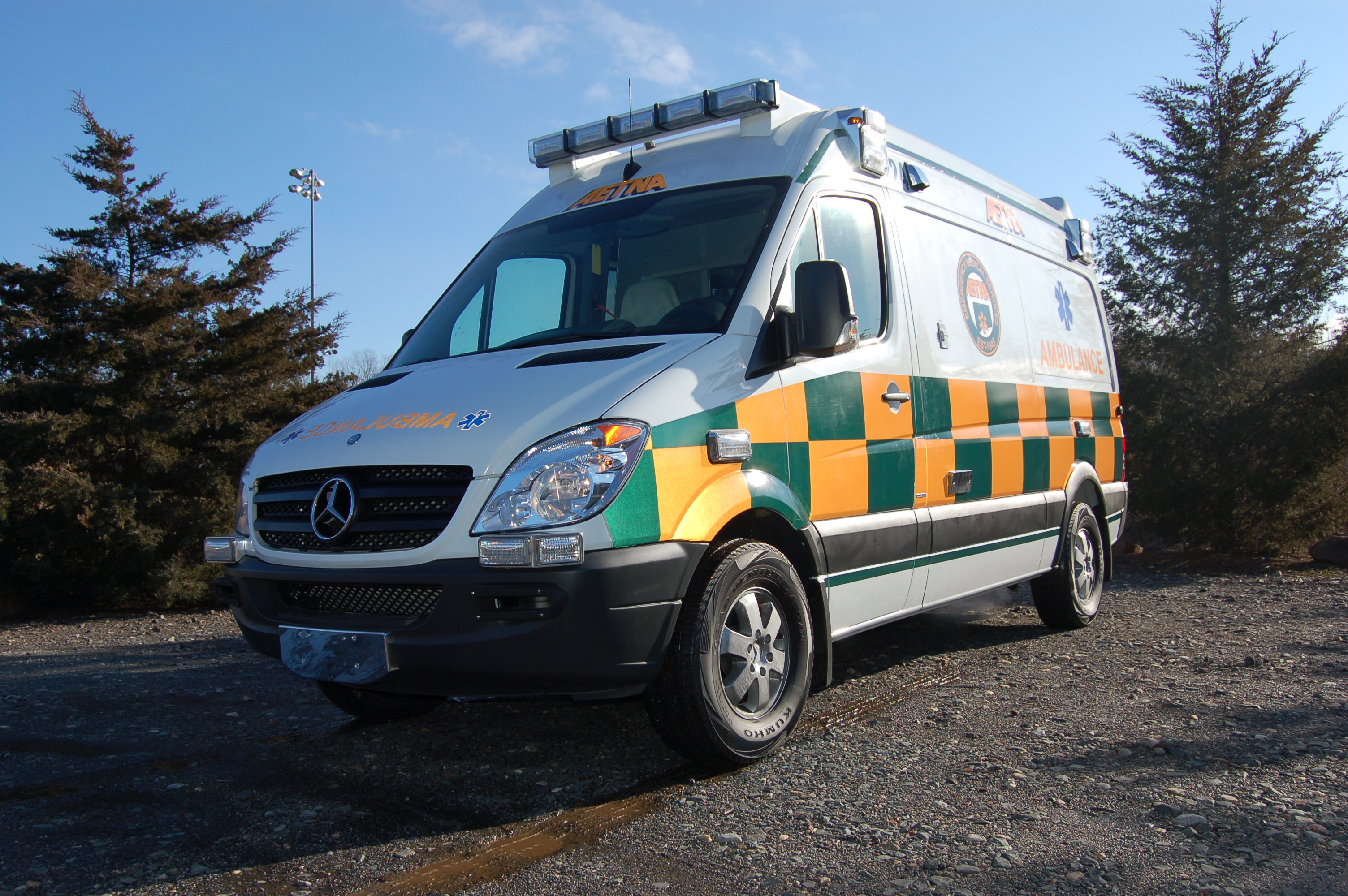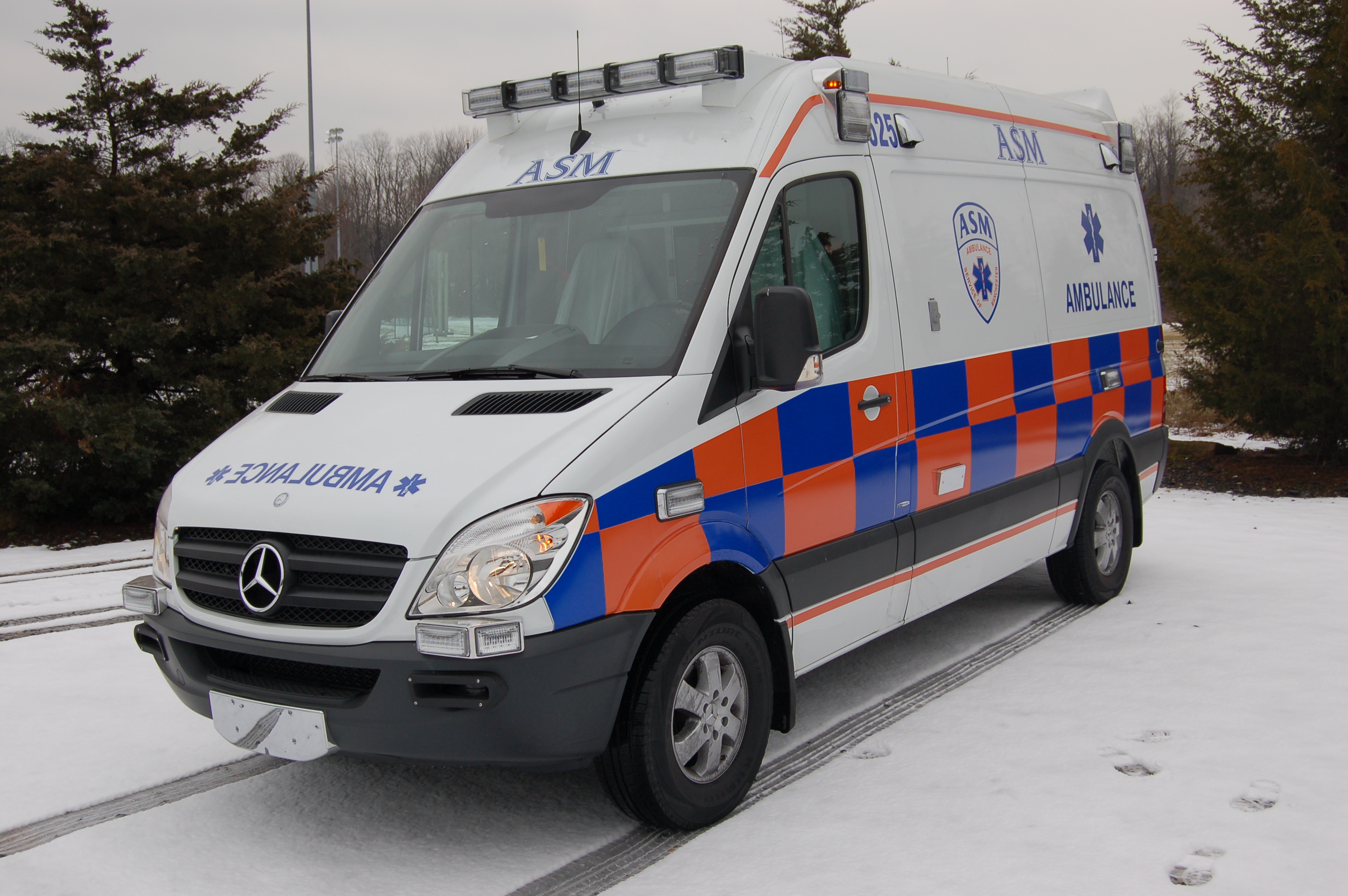
ASM Mercedes Sprinter Ambulance in Battenburg
MANCHESTER — In an effort to further our use of cutting edge research in vehicle visibility design, ASM and Aetna have elected to adopt “full Battenburg” design on our newly added Mercedes Sprinter ambulances.

Aetna Mercedes Sprinter Ambulance in Battenburg
Since purchasing the first Dodge Sprinters from American Emergency Vehicles in 2009 we have utilized a custom-made smaller-block “Sillitoe marking” design with 4 x 4 inch retro-reflective blocks (as seen in the picture on our mast-head above).
Research has shown that larger blocks are even more effective in signaling their presense to the naked eye while the vehicle is in motion. This is especially true in peripheral vision of other drivers. Classic stripes are thought to blend in with the horizon in peripheral vision.

ASM Mercedes Sprinter Ambulance in Battenburg
You can read more about Vehicle Conspicuity on our website by clicking here and selecting the FEMA Conspicuity Article.

Aetna Mercedes Sprinter Ambulance in Battenburg

ASM Mercedes Sprinter Ambulance in Battenburg

Pingback: ASM Mercedes Ambulance at Lutz Children’s Museum’s “Touch a Truck” Event | ASM-AETNA Blog
Pingback: Mercedes Ambulances Arrive for Duty at Aetna and ASM | ASM-AETNA Blog
Posted on http://ambulancevisibilityblog.wordpress.com/:
Thank you for your interest in the AV Blog and also for posting your comment. Aetna is to be commended for changing away from the Sillitoe checker pattern to the Full Battenburg markings. The smaller blck Sillitoe markings are being removed from emergency vehicles in Australia and other countries as organisations realise they do in fact camouflage the vehicle. I can also understand your choice of fluorescent orange for your Battenburg colour scheme as your vehicles work in snow conditions for much of the year. Your crews will still need to exercise care under conditions of low ambient light (eg street-lighting) as the panels of the orange/blue combination are percieved by an observer as dark colours (the orange and blue are very similar in terms of luminance). However this is not the case when the light from a headlamp illuminates the orange/blue pattern – the much higher retro-reflective capacity of the orange panels compensate by reflecting significantly more light than the blue panels. The fluorescent yellow/green colour used on the original UK police battenburg scheme possesses a much higher ambient and retro-reflective luminance value than the flourescent orange. The yellow/green Battenburg combination still remains the only fully tested high-conspicuity colour combination. The posts on the AV blog and the information available on the Ambulance Visibility website explain many of the Battenburg pros & cons in more detail. A substantial part of this information from AV is referenced in the FEMA Conspicuity report I would like the opportunity to highlight your blog post on the AV blog as a good example of ongoing research being used to upgrade vehicle markings if that is OK with you. Again, well done to Aetna for moving forward.
Just a technical correction, you actually have switched to a half Battenburg livery, full Battenburg goes all the way to the roofline. The 4×4 checkers are Silltoe livery.
Even so, I applaud ASM/Aetna for working hard to improve the visibility of their vehicles and improving the safety of their employees working environment. Keep up the good work!
Thanks for your comment. I would like to see some standardization of the language. I know that it exists but when you research Battenburg the information comes from all over the world, is widely varied and the research is robust but varies widely. If you have a definitive guide to visibility that is better than the FEMA guide found on our site I would love to see it. I think at some point most services will end up with some variation off of this and I hope that there is guidance from the DOT.